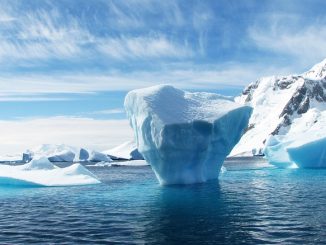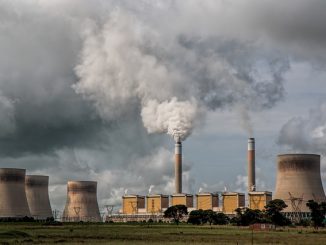One of the most closely watched benchmarks of climate change reached a modern high – or low – point this week, as ice covering the Arctic Ocean diminished to the smallest extent observed since satellite records began in 1979.
As always, there will be debate over exactly what this means, but it certainly means one thing: As of this week, ice covered less of the world’s northernmost sea than man has ever measured previously. And it means the previous low-ice mark, set in 2007, did not represent the bottoming out of a natural cycle of greater summer ice melt.
Graphics from the National Snow and Ice Data Center show the remaining ice cover as a relatively compact, symmetrical circle that is centered near the North Pole and extends southward to the Canadian archipelago. This is not a continuous mass of ice; the ocean is considered to be “ice-covered” with as little as 15 percent ice floating in a given surface area of water. There is likely to be further shrinkage over the next several weeks as the melting season reaches its typical seasonal end, although given the high latitude of the ice remaining and the rapidly shortening days of the boreal summer, the ice cover may stabilize a bit earlier than usual this year.
The season in the Arctic has been an interesting one. It began with greater than usual sea ice in the Bering Sea off Alaska’s west coast, a region that experienced an unusually harsh winter in 2011-12. The spring ice cover was also about average in the seas near Greenland and northeastern Canada, a region where ice had been virtually absent the previous year in the aftermath of a freakishly warm winter. But in the spring of 2012, there was hardly any ice in the oceans north of Scandinavia and western Russia, so the overall ice pack was smaller than average when the melt got underway in earnest.
The ice-free zone expanded steadily eastward off the coast of Siberia, but it grew more slowly in the western Arctic near Alaska until an unusually intense summer storm – considerably more powerful than Tropical Storm Isaac was when it approached the Gulf Coast yesterday – crossed the region in early August. The ice pack in the western Arctic Ocean nearly disappeared in the space of a few days, probably due to a combination of warm air surging north ahead of the storm, wave action from the powerful winds, and the wind itself either pushing loose ice harder against the shrinking polar ice pack or southward into warmer seas.
The diminished ice coverage still has not opened the fabled Northwest Passage from the Atlantic through the Canadian Arctic to the Bering Strait and the Pacific Ocean. Although the passage has been open in other recent years, the NSIDC graphics still show ice blocking some of the narrow straits in Canadian waters. The Northern Sea Route, which leads from western Europe across Russia to the Pacific, looks like it might now be open for shipping.
Reduced ice in the Arctic is not the only evidence of an extreme Northern Hemisphere summer in 2012. On our continent, an intense and sprawling early-summer heat wave morphed into severe drought over much of the central United States. In Europe, just last week, high-elevation stations across the Alps set warm-weather records; some peaks were without snow cover for the first time since record-keeping began.
One of the oddities of “global warming” is that it is not all about warming. It is really more about extremes. While much of the U.S. baked in heat and drought during the summer’s opening weeks, Britons wondered if it would ever stop raining. (It did, more or less, just in time for the London Olympics.) It was cold and wet in Scandinavia, too; parts of northern Sweden experienced snow in early June.
As I have written here before, I don’t doubt that climate is changing and that humans play a role, even though I am skeptical of our ability to accurately model such change and of our readiness to develop wise policy responses. A new record minimum for Arctic sea ice does not change this. But it does remind us that the planet is not going to wait for us to decide whether it would be wise to stop fueling our cars with feed corn that requires rainfall, fertilizer and diesel fuel to produce. Another drought like this year’s just might make the decision for us.





Leave a Reply